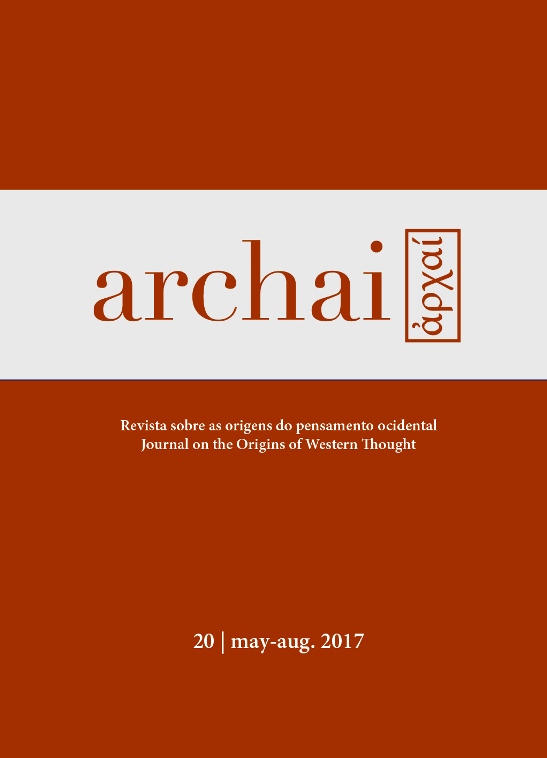Parmenides as Psychologist ”“ Part Two: DK 6 and 7
DOI:
https://doi.org/10.14195/1984-249X_20_2Abstract
The aim of this essay is to examine an aspect of Parmenides’ poem which is often overlooked: the psychological grounds Parmenides uses to construct his view. While it is widely recognized by scholars that following Parmenides’ view requires addressing mental activity, i.e. both the possibility of thinking the truth, as well as thinking along the wrong path that mortals follow, a closer examination of the psychological assumptions involved have, to my knowledge, not yet been attempted. I argue that by identifying and analyzing the psychological vocabulary in his poem, it is revealed that Parmenides was a keen observer of human mental behavior. Through these psychological (perhaps “cognitivist,” following some recent categories) observations of thought processes, Parmenides gains insight into the structure of thought itself. The outcome of this inquiry reveals three notable conclusions: First, the poem contains a remarkably extensive use of strictly psychological vocabulary. Second, the presence of this psychological material and the lack of scholarly attention to it means there is a significant aspect of Parmenides intellectual legacy that remains unexplored ”” Parmenides as psychologist, keen observer of human mental behavior. Furthermore, the recognition of this material helps shed important light on Parmenides’ philosophical message. Ultimately, I intend to provide an exhaustive treatment of Parmenides’ psychological language, which requires close examination of DK B 1, 2, 6, and 7. Due to spatial constraints, I have divided the inquiry into two parts, and will only address DK 1-2 below.
Downloads
Downloads
Published
How to Cite
Issue
Section
License
Given the public access policy of the journal, the use of the published texts is free, with the obligation of recognizing the original authorship and the first publication in this journal. The authors of the published contributions are entirely and exclusively responsible for their contents.
1. The authors authorize the publication of the article in this journal.
2. The authors guarantee that the contribution is original, and take full responsibility for its content in case of impugnation by third parties.
3. The authors guarantee that the contribution is not under evaluation in another journal.
4. The authors keep the copyright and convey to the journal the right of first publication, the work being licensed under a Creative Commons Attribution License-BY.
5. The authors are allowed and stimulated to publicize and distribute their work on-line after the publication in the journal.
6. The authors of the approved works authorize the journal to distribute their content, after publication, for reproduction in content indexes, virtual libraries and similars.
7. The editors reserve the right to make adjustments to the text and to adequate the article to the editorial rules of the journal.



